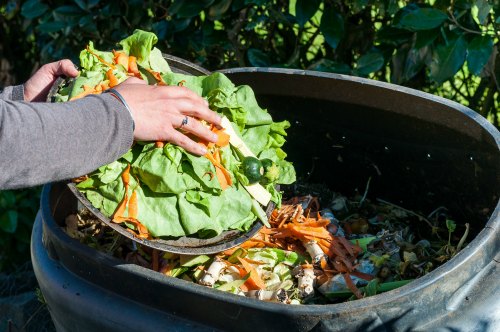Turn your waste into something worth keeping. Composting your yard and kitchen waste can create a great product for your garden. Here’s a few tips to help you get started.
How to Compost
Set Up a Bin or Pile
To start your composting experience, you will need to create a bin or a pile to collect the waste. You will need to choose a sunny spot in your yard as the heat from the sun will help break down the materials. You can use a large plastic storage bin to collect your compost, but you will need to drill several holes in the bottom for drainage.
If you have access to wooden pallets, use four or five pallets to create a compost bin. Wire or screw four pallets together to create a box. Use a fourth pallet or a piece of carpet to create a cover over the top to keep out rain.
Collect Waste Items
Once you have your compost bin set up, it’s time to start adding waste that needs to be composted. You can throw your kitchen scraps (except for meats, oils, fats, and dairy products) into the compost bin. These will have a high moisture content and will collapse as they decompose. Add more items to keep the pile growing and doing its work of decomposing and breaking down materials into usable, rich composted soil.
Add paper towels, shredded newspaper, cardboard, grass clippings, leaves, old plants and weeds, straw, hay, sawdust, and wood ash to your compost pile. These items will add bulk to your pile as the kitchen scraps break down and collapse and will also help keep the moisture at the correct level to keep the decomposition going.
Use the Completed Compost
It can take several months for the materials to break down. You will need to check your pile occasional and use a pitchfork to turn the contents to allow everything to decompose. If your pile is too wet, add bulky material like straw, ash, hay, cardboard, or paper. If the pile seems to dry, add a little water. Heat and moisture work together to break down these materials and turn them into compost that you can use.
When you need to check how the composting is going, use a pitchfork or small shovel to dig some compost out of the base of the compost heap. When you use compost from the pile, you will need to use it from the bottom. Use your pitchfork to cover everything back up after you have removed some of the compost.
Turning your waste into compost is a great way to reuse organic material. This compost can be used on your garden or your flowering plants to help them thrive and grow. The best part about creating your own compost is that it costs almost nothing to get started and you are doing an easy DIY project that is good for the Earth.
Did you enjoy this post? Find more money saving tips here.



